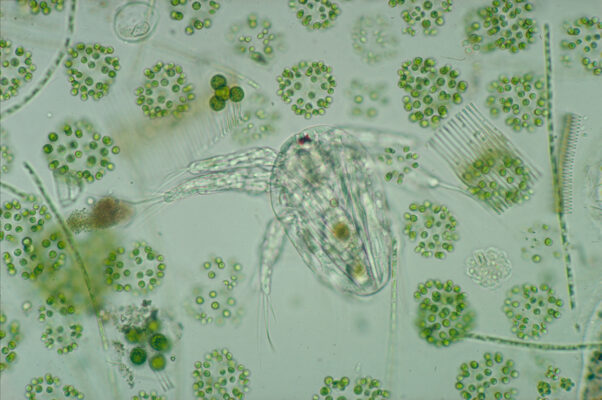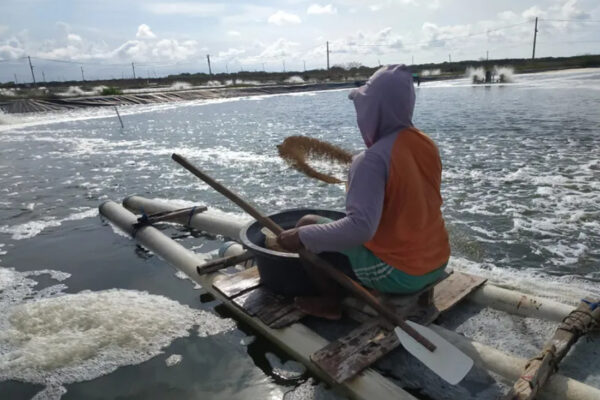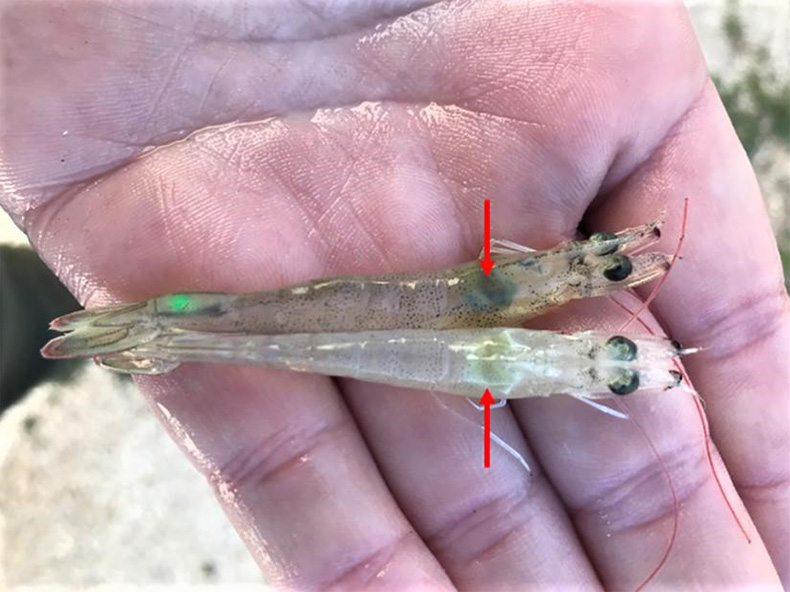
One of the most effective methods recommended for the prevention of Vibrio diseases is to keep phytoplankton densities at an optimal level.
The hallmark of Vibriosis is the presence of dead shrimp at the bottom of the pond, preceded by a dramatic decrease in the density of plankton.
According to Heny Budi Utari – a shrimp health expert from CPP Department of Animal Health, one of the early signs to detect Vibrio disease is a serious decline in plankton, when the disease appears, it can be seen. shrimp gather at the bottom of the pond and die. The solution that Utari offered in this case is to create conditions for the plant population to grow well, in order to stabilize the water quality by siphoning the pond bottom and changing the water.
In addition, probiotics such as Bacillus and Lactobacillus, vitamin C or other immune products can be added to improve shrimp health instead of using industrial feed entirely. Utari pointed out that if the balance of phytoplankton returns, farmers can continue to grow shrimp as large as 20g/head after Vibrio infection.

In addition to providing oxygen and a source of food for animals in the pond, phytoplankton also provide shade in the water that keeps shrimp in the pond comfortable and healthy. Since the hatcheries in the farms are strictly controlled, changing the environment during transport to the ponds can stress the shrimp. If the environment is not comfortable for the shrimp, their immune systems can be weak and allow opportunistic bacteria like Vibrios to thrive. Therefore, according to Utari, phytoplankton should be cultured before stocking shrimp seed.
However, these phytoplankton must then be maintained at optimal species numbers and composition. Blooming events or drastic reductions in plankton numbers can cause other water parameters to fluctuate drastically. The mass death of phytoplankton can stress shrimps and make it easier for Vibrio bacteria to infect and attack their digestive systems.
Research by Kamilia et al. also shows that the density and composition of phytoplankton in the pond have a direct effect on the productivity of the pond, specifically according to the reported results, the ponds have a large amount of phytoplankton. Larger ponds yield higher yields than ponds with lower mass, and the more diverse the phytoplankton species composition, the more inhibited the growth of Vibrios.

Phytoplankton in the pond plays a very important role, based on the predominant algae species composition in the pond, it is possible to assess the quality of the cultured species. Some groups of algae such as thyroid algae, green algae, etc., if they appear in ponds, shrimps will be difficult to digest because the shrimp cell walls are very hard, causing intestinal blockage and broken feces. Shrimp’s weakened condition is always the leading cause for pathogens to enter.
The above integrated studies have also shown the importance of controlling and maintaining the stability of phytoplankton that can contribute to the prevention of Vibrio disease in shrimp.
In summary, the importance of aquatic plants in aquaculture is extremely important, it not only assesses the level and condition of the pond, but also the opportunistic factors for pathogens to develop. Therefore, controlling and maintaining the stability of the plant population is really essential, not only in the supply of oxygen and food, but also in effective disease prevention.

 Tiếng Việt
Tiếng Việt Indonesia
Indonesia